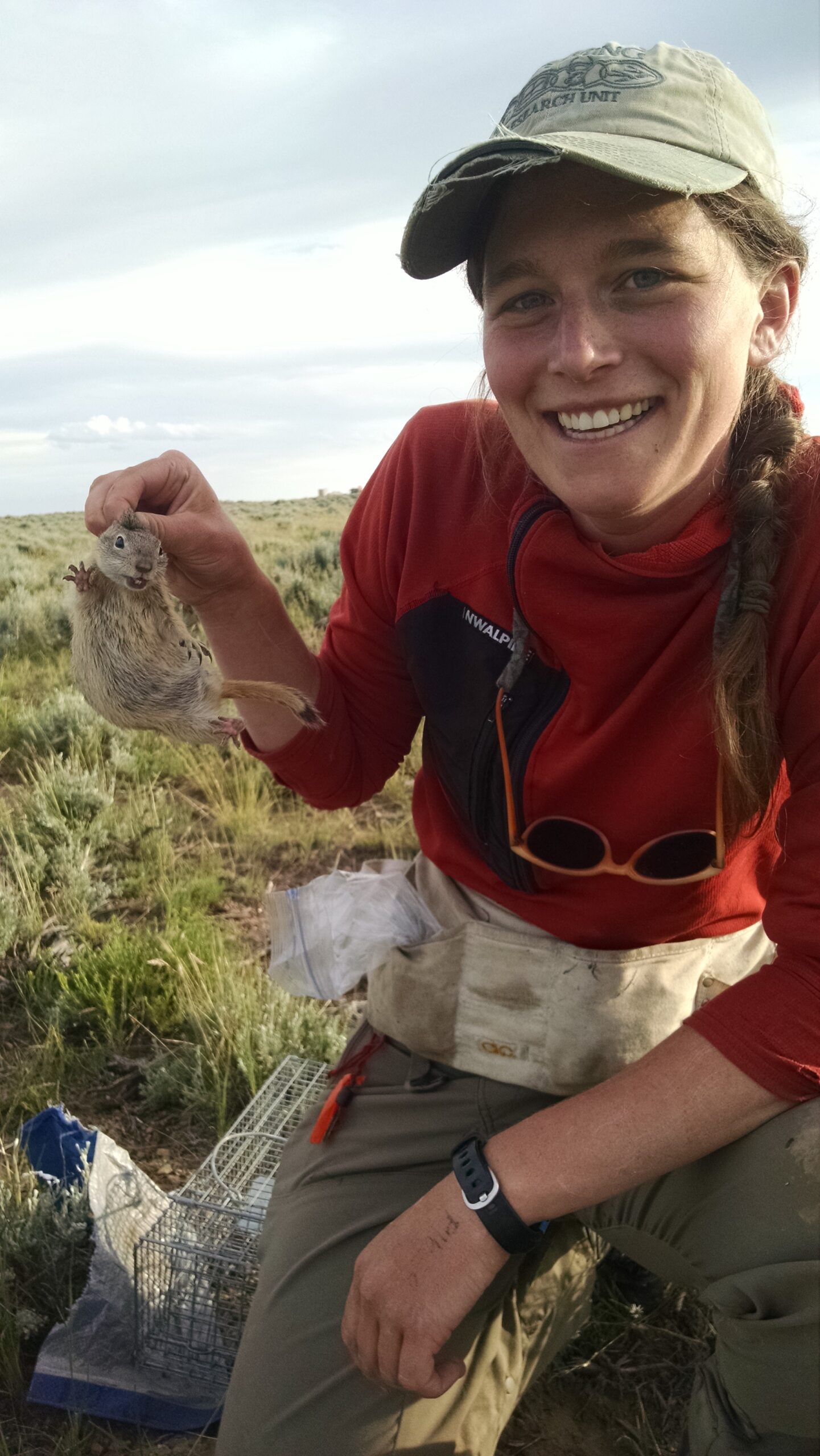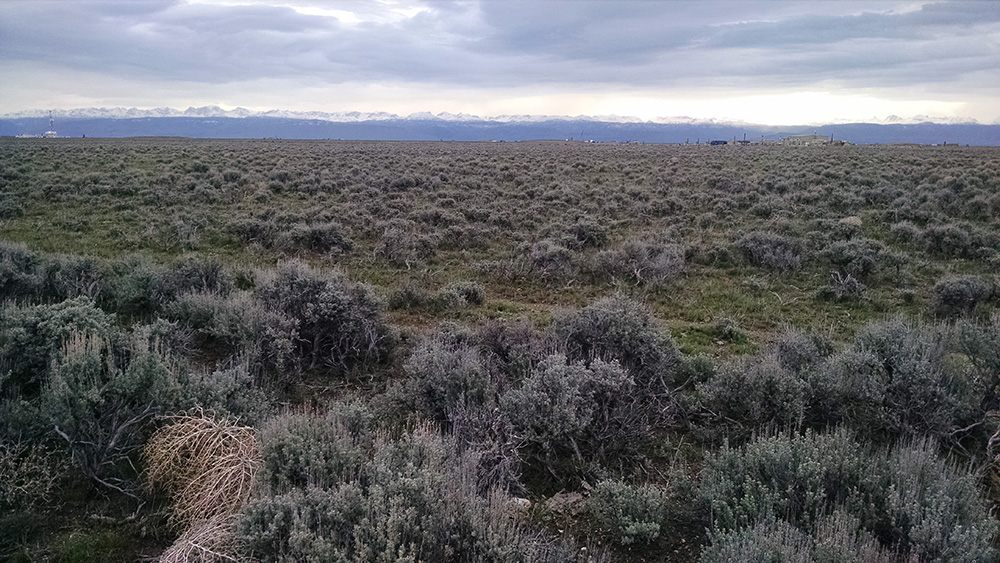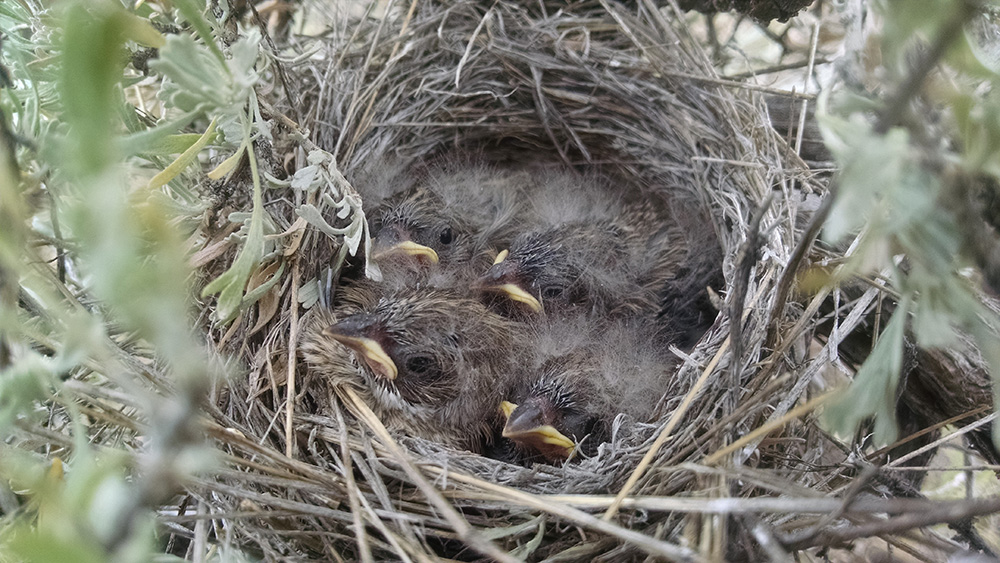Energy development has become a primary source of anthropogenic habitat alteration in the western US, with the majority of development occurring within sagebrush dominated landscapes. Since May 2008 we have been examining questions relating to fitness consequences for sagebrush-obligate birds nesting in the Upper Green River Basin, WY. Field crews locate and monitor songbird nests across an existing energy gradient in the Jonah gas field and Pinedale Anticline Project Area (PAPA).
Our prior research has demonstrated decreased daily nest survival rates of the three sagebrush-obligate songbird species (Brewer’s sparrow, sagebrush sparrow and sage thrasher) with increased surrounding habitat loss due to natural gas development. This decreased nest success was due to increased predation, with three quarters of observed nest depredation events attributed to rodents. This research also identified a relationship between elevated songbird nest predation rates and rodent abundance in areas with increased habitat loss from energy development.
To better understand the cause of nest failures in this system, we must also examine mechanisms driving small mammal abundance. We are currently testing two alternative hypotheses to explain observed increases in small mammal abundance associated with energy development. Nest monitoring, small mammal trapping, and mesopredator surveys are being conducted across a gradient of habitat loss to asses whether predators for which rodents are a primary prey item may be less abundant near energy development. We are also assaying body condition of captured small mammals to assess whether reclaimed areas near well pads, which are primarily composed of native and non-native grasses and forbs rather than sagebrush, are providing supplemental food to rodents.
Shrubland and grassland bird populations are declining faster than any other group of avian species in North America. With increasing demands for domestic sources of energy, the identification of specific mechanisms influencing nest predation is a critical next step in developing clear strategies for mitigating the impacts to songbirds breeding in energy fields.
Watch Nest Predation Clips!
Reports & Publications
Hethcoat, M.G. and A.D. Chalfoun. 2015. Towards a mechanistic understanding of human-induced rapid environmental change: a case study linking energy development, nest predation and predators. Journal of Applied Ecology. View PDF
Hethcoat, M.G. and A.D. Chalfoun. 2015. Energy development and avian nest survival in Wyoming, USA; A test of a common disturbance index. Biological Conservation 184: 327-334. View PDF
Gilbert, M.M. and A.D. Chalfoun. 2011. Energy development affects populations of sagebrush songbirds in Wyoming. The Journal of Wildlife Management 75(4): 816-824. View PDF
Contact
Lindsey Sanders, M.S. candidate
WY Cooperative Fish & Wildlife Research Unit
Dept. 3166, 1000 E. University Avenue
Laramie, WY 82071
lsander7@uwyo.edu
lab: (307) 766-2091
fax: (307) 766-5400
Anna Chalfoun, Ph.D. – Project PI
Assistant Unit Leader/Assistant Professor
WY Cooperative Fish & Wildlife Research Unit
Dept. 3166, 1000 E. University Avenue
Laramie, WY 82071
achalfou@uwyo.edu
lab: (307) 766-6966
fax: (307) 766-5400
Project Lead
Lindsey Sanders: Lindsey worked as Research Scientist from 2018-2020 in the Chalfoun Lab at the University of Wyoming, based in the Cooperative Fish and Wildlife Research Unit. She is generally interested in community ecology, landscape change, and mechanistic research, specifically in improving our understanding of how wildlife species and communities respond to human-caused habitat change in its various forms. MORE »

Funding & Partners
- Wyoming Landscape Conservation Initiative, USGS
- Wyoming Game & Fish Department
- Wyoming Wildlife: The Foundation












